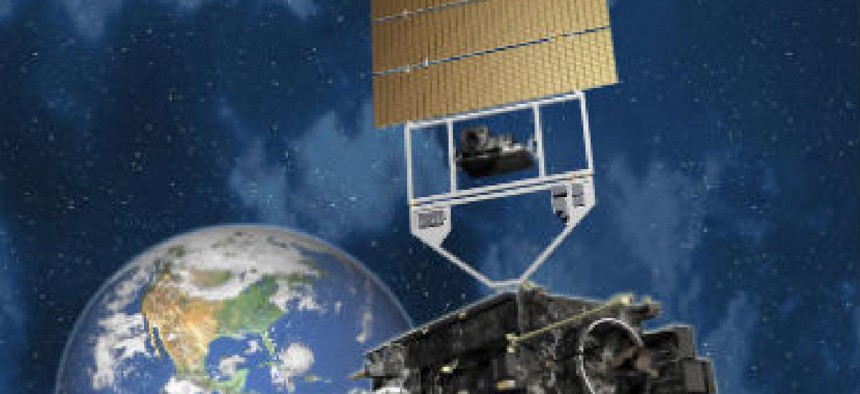NOAA's budget boost could help weather satellite program

A proposed increase could enable the science agency to develop new satellites faster, but still might not prevent a coverage gap.

A proposed increase could enable the science agency to develop new satellites faster, but still might not prevent a coverage gap.
The Obama Administration's fiscal year 2014 budget proposal increases funding for the National Oceanic and Atmospheric Administration by about $200 million compared to the previous year's enacted funding levels. It would allocate $5.45 billion for the agency charged with forecasting the weather.
A hefty $2.2 billion of that requested budget would fund NOAA's National Environmental Satellite Data and Information Services (NESDIS), which maintains the agency's satellite systems, including the aging polar-orbiting satellites that play a critical role in helping the NOAA's National Weather Service forecast the weather.
Those polar-orbiting satellites – including one that was retired April 10, the same day the president's budget came out – will not be replaced until 2017, leading to a potential gap in satellite coverage that could last up to 53 months, according to U.S. Comptroller General Gene Dodaro, who recently testified before Congress on high-risk programs.
Currently, a converted demonstration satellite launched by the Joint Polar Satellite System (JPSS) team in 2011, called the Suomi NPOESS Preparatory Project (NPP), leads the aging squad of satellites, but its lifecycle is not likely to be long. Though NESDIS will receive more money than it did in 2013, the added funding will not speed up the initial launch ofJPSS-1, the first true replacement polar-orbiting satellite under the program.
However, it will accelerate the development of other satellites in the program and should move the launch date for JPSS-2 – the second satellite scheduled to launch in the JPSS program – ahead to 2021, according to Dr. Kathryn Sullivan, Acting NOAA Administrator.
Sullivan said critical reviews of NOAA's satellite program by GAO and an outside advisory panel led the agency to identify "significant life-cycle cost savings" totaling over $1 billion. As a result, the JPSS program will "sharpen its focus" on the weather mission and has opted to move climate mission objectives to other programs. NASA has taken over responsibility for developing the satellite program's climate sensors, moving JPSS program's second launch ahead by at least one year.
"We have been able to move the launch date of the second JPSS satellite forward to 2021 – this is significant change that decreases the possibility of gap in service between JPSS-1 and JPSS-2," said Sullivan, speaking at a budget press conference.
Still, GAO officials have warned that a gap in weather coverage could occur as early as 2014 if the polar-orbiting satellites that provide early, midday and afternoon warnings to feed computer weather prediction models stop working.
Sullivan said NOAA is working hard to look at remediation options if a gap in satellite coverage occurs. Potential fixes include maximizing the life of the Suomi NPP and developing a plan to address potential data gaps, by substituting other satellite observations, non-satellite data, weather modeling and data-assimilation improvements.
"There has been focus on what would happen to the forecast quality in the United States if there were in fact a gap between the polar operational satellites," Sullivan said. "In addition to keeping our acquisition schedule on track, we have been purposed to invest significantly in activities that will help mitigate consequences of a loss of this data should it occur."
Other NOAA budget nuggets
Sequestration has not been kind to NOAA, with sequestration-related cuts forcing the agency to impose an agency-wise hiring freeze.
Under the proposed budget, NWS would get $23 million to meet its labor costs, $1.5 million for its drought early warning system and $7 million to conduct research into climate issues. The budget proposal also gives NWS money to upgrade its computer systems – primarily those used for climate research – though some would be allocated to tools like unmanned aerial vehicles, which could be useful for investigating hurricanes.






